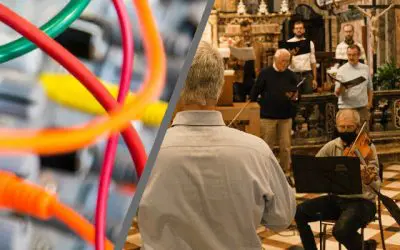If you have been following my recent series of articles, you know that I have a certain level of respect for the common buzzword. Yes, they can be overused and trivialized in the business press (and in everyday life). Alas, some buzzwords are overworked, laden with so much meaning as to be almost unrecognizable. Case in point – Sustainability.
What Does Sustainability Mean?
I consistently hear this simple question when I broach the subject. It is laden with subtext—are we talking about hot-button social issues or block-and-tackle business concerns? And there are so many social, environmental, and economic topics getting lumped in—how can we define something so broad with a single word?
Entrepreneurs in forestry and environmental industries grapple with this even more. Investors want “sustainable” ventures, but what does that really mean? A startup planting trees for forest restoration has a different sustainability challenge than one developing AI-driven wildfire prediction models.
I sense a certain amount of exasperation over this term from engineers and technical folks who have been around a few years. Nicely amped up over a beer, we reminisce about the Roaring 90s when we were designing systems and processes that lived within the four walls of our respective companies.
Back in the day, we designed systems and processes that were ‘sustainable and scalable.’
That meant robust systems that could keep going over time, surviving the twists and turns of everyday operations. This idea of sustainability—the ability to keep things running—applies just as much to startups today.
For an early-stage entrepreneur, sustainability starts with:
- Technology—Can your core solution evolve with industry changes?
- Operations—Can you scale without burning cash too fast?
- People—Can you train and retain the right talent as you grow?
From this viewpoint, sustainability is a **proactive** practice, ensuring your business model doesn’t collapse under pressure.
Resilience vs. Sustainability: Startups Need Both
Wait a sec … that sounds like ‘resilience.’ Aren’t you designing resilience into your systems and processes?
Yes—but resilience and sustainability are different. Resilience is a **reactive** approach to risk management, ensuring systems and processes keep running today, tomorrow, next week, next month.
For example, if your startup relies on a specific supplier for seedlings, what happens if that supplier goes out of business? A resilient company has backups. If you’re using drones for wildfire detection, what happens when a regulation changes? A resilient company adapts.
Think of it this way:
- Resilience is about surviving surprises. Sustainability is about thriving long-term.
- Resilience is defensive. Sustainability is strategic.
- Resilience keeps the lights on. Sustainability ensures you have a future.
Startups need both.
What Does Sustainability Mean … Today?
The world has expanded the definition of sustainability. It’s no longer just about operations and supply chains—it’s about broader impact. How did we get from that to diversity, poverty, climate change, and forest economics?
Actually, we haven’t made that big of a leap. We’re still talking about systems and processes—just on a larger scale. And for startups, this means thinking about:
- Environment – How does your product or service impact the natural world? Whether you’re in reforestation, sustainable timber, or carbon capture, you need to prove your environmental sustainability to attract funding.
- Economics – Can your startup grow profitably without constant funding rounds? How will you scale without exhausting resources?
- Community – Who benefits from your business? Investors? Customers? Local communities? Employees? Can you build lasting relationships that make your startup indispensable?
Cutting Through the Buzzword Clutter
To avoid drowning in sustainability jargon, entrepreneurs need to simplify and communicate clearly—especially when pitching investors. Consider these startup success stories:
- DroneSeed – Uses drones to plant trees after wildfires, tackling both sustainability and scalability issues in reforestation.
- Pachama – Uses AI and remote sensing to validate carbon offsets, making sustainability data-driven and transparent.
- Bark House – Produces sustainable wood siding and wall panels while ensuring ethical sourcing and carbon-negative operations.
What do they have in common? They explain their impact in plain language. No jargon. No fluff. Investors and customers understand exactly what they do.
Can We Get Back to Our Beer?
That’s actually a wise idea. Most startups will resonate with a subset of sustainability’s broad range of concepts. As a first step, it’s enough to understand the three pillars—Environment, Economics, and Community—and how they fit into your business strategy.
Then, communicate it clearly and simply. That’s how you cut through the buzzword clutter and build a truly sustainable business.
Join our mission to support innovation in sustainable forestry. Sign up for our mailing list for insights, funding opportunities, and startup resources.
Share your thoughts in the comments—how does your startup define sustainability?
- How to Navigate Buzzword Overload: Sustainability
- How to Navigate Buzzword Overload: Complexity





0 Comments